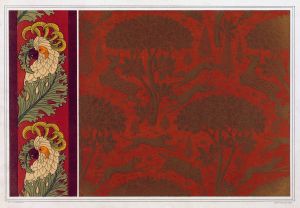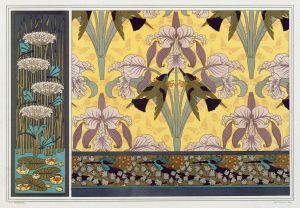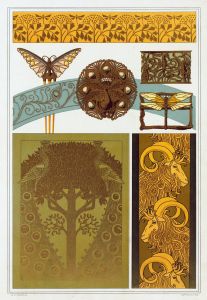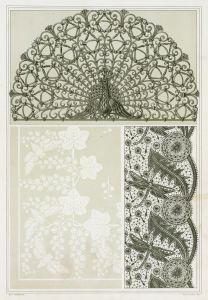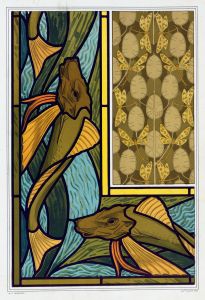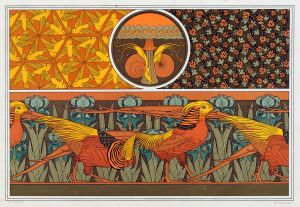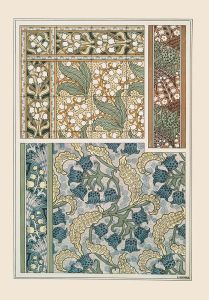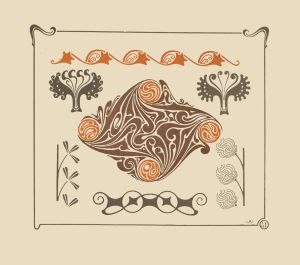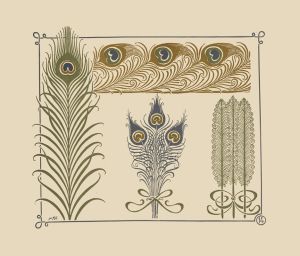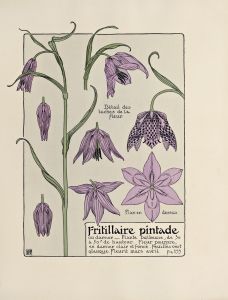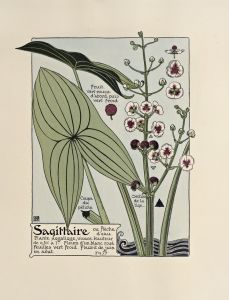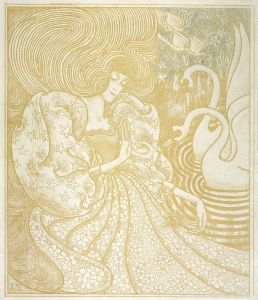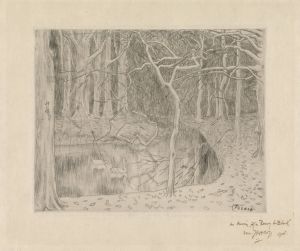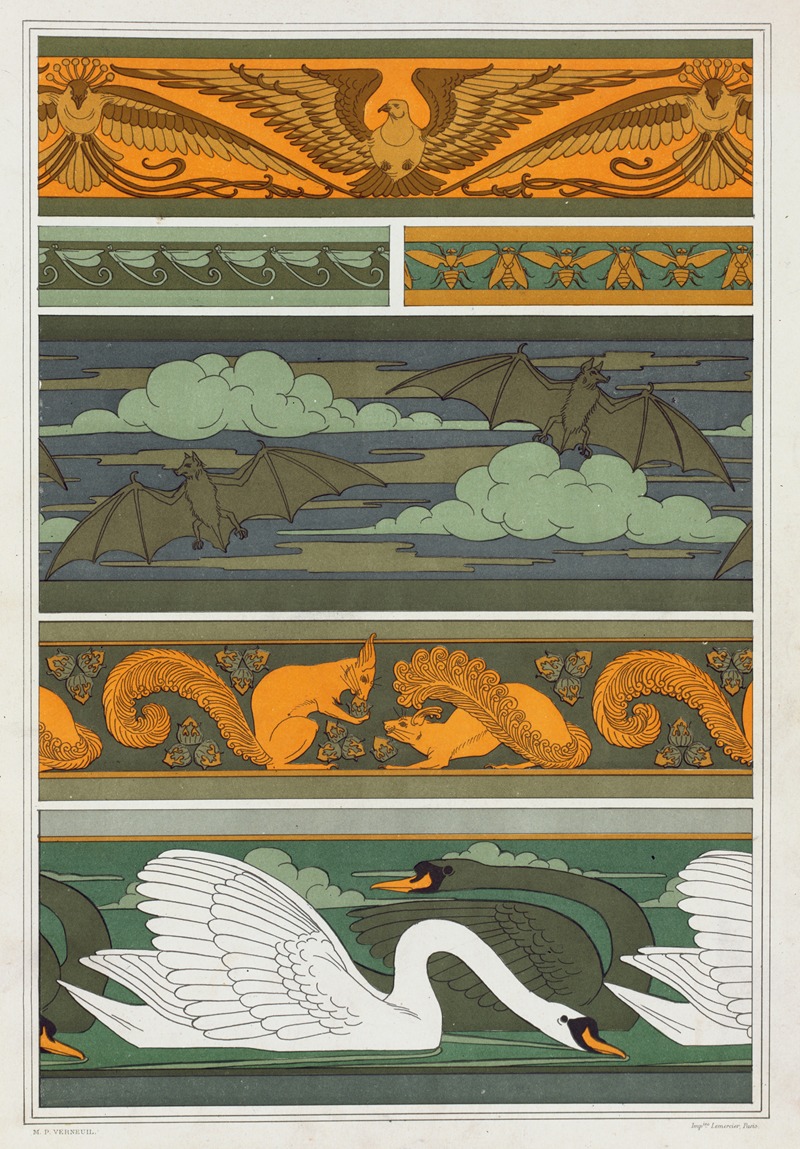
Oiseaux. Libellules. Mouches. Chauve-souris. Écureuils et noisettes. Cygnes, bordures.
A hand-painted replica of Maurice Pillard Verneuil’s masterpiece Oiseaux. Libellules. Mouches. Chauve-souris. Écureuils et noisettes. Cygnes, bordures., meticulously crafted by professional artists to capture the true essence of the original. Each piece is created with museum-quality canvas and rare mineral pigments, carefully painted by experienced artists with delicate brushstrokes and rich, layered colors to perfectly recreate the texture of the original artwork. Unlike machine-printed reproductions, this hand-painted version brings the painting to life, infused with the artist’s emotions and skill in every stroke. Whether for personal collection or home decoration, it instantly elevates the artistic atmosphere of any space.
Maurice Pillard Verneuil was a prominent French artist and designer known for his contributions to the Art Nouveau movement during the late 19th and early 20th centuries. His work often featured intricate patterns and designs inspired by nature, showcasing his keen observation of the natural world. One of his notable works is "Oiseaux. Libellules. Mouches. Chauve-souris. Écureuils et noisettes. Cygnes, bordures."
This piece is a testament to Verneuil's fascination with the diversity and beauty of wildlife. The title, which translates to "Birds. Dragonflies. Flies. Bats. Squirrels and Hazelnuts. Swans, Borders," gives insight into the subjects depicted in the artwork. Each element in the title represents a different aspect of nature that Verneuil sought to capture, reflecting his appreciation for both the common and the exotic in the animal kingdom.
Verneuil's work is characterized by its detailed and stylized representation of natural forms. In "Oiseaux. Libellules. Mouches. Chauve-souris. Écureuils et noisettes. Cygnes, bordures," he employs a decorative approach, integrating these elements into a cohesive design that emphasizes symmetry and harmony. This approach is typical of the Art Nouveau style, which often features flowing lines and organic shapes.
The inclusion of various animals and plants in the artwork highlights Verneuil's interest in biodiversity and the interconnectedness of different species within their ecosystems. Birds, dragonflies, and flies are depicted with attention to their delicate structures and vibrant colors, while bats and squirrels are shown in more dynamic poses, capturing their movement and energy. The presence of hazelnuts and swans adds a touch of elegance and tranquility to the composition, balancing the more active elements.
Verneuil's choice of subjects reflects the Art Nouveau movement's broader themes of naturalism and the integration of art into everyday life. By drawing inspiration from nature, Verneuil and his contemporaries sought to create art that was both beautiful and functional, blurring the lines between fine art and decorative art. This philosophy is evident in "Oiseaux. Libellules. Mouches. Chauve-souris. Écureuils et noisettes. Cygnes, bordures," where the natural world is transformed into a decorative motif that could be applied to various contexts, from textiles to architecture.
Maurice Pillard Verneuil's work, including this piece, played a significant role in popularizing the Art Nouveau style across Europe and beyond. His ability to capture the essence of nature in a stylized yet accessible manner made his designs widely appealing, influencing a generation of artists and designers. Today, Verneuil's work is celebrated for its artistic innovation and its contribution to the development of modern design.
In summary, "Oiseaux. Libellules. Mouches. Chauve-souris. Écureuils et noisettes. Cygnes, bordures" exemplifies Maurice Pillard Verneuil's mastery of the Art Nouveau style and his deep appreciation for the natural world. Through his detailed and harmonious compositions, Verneuil invites viewers to explore the beauty and complexity of the wildlife that surrounds us, making his work as relevant today as it was over a century ago.





